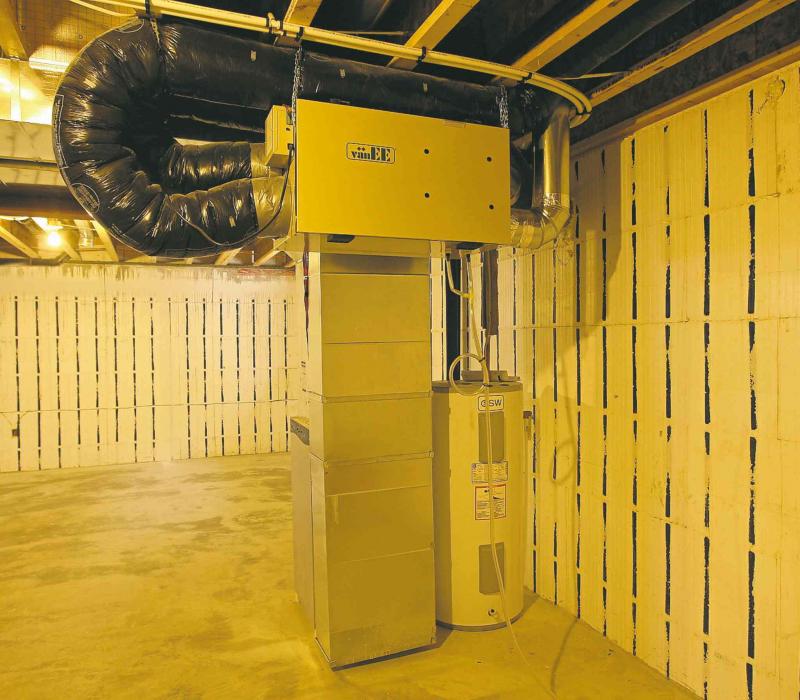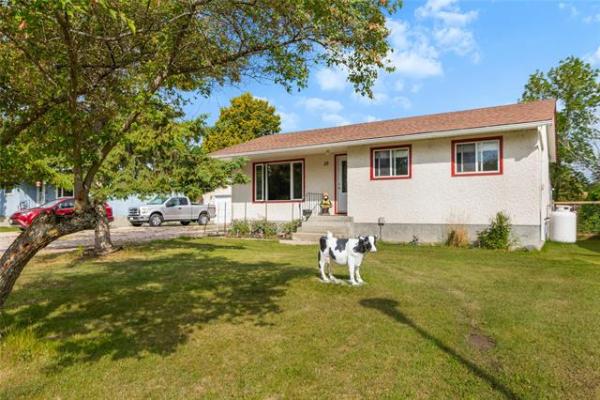Question:
I would like your opinion, if possible, on a situation with the basement in our home. We have a Logix Styrofoam/concrete basement in a six-year-old home. We had some water leakage into the basement a couple of years after the home was built. The water was nothing significant, but it was cause for some concern. We had a contractor come in to assess the situation in the spring of 2011. He found some cracks in the foundation and suggested filling the cracks and sealing the basement where the water was coming in with a compound that expands and seals once it comes into contact with water. After this was done, we did not have any water leakage in the basement for the rest of the spring or summer even though it was the wettest in the past 50 years.
In the spring of 2012, I noticed a small amount of water dribble in at the same location over a couple of days and then stop. We have not had any water problems since, even though the following spring has again been very wet. What could have been the source of this water? Before, when we had the cracks in the foundation, if there was a heavy rain we would see some leakage. We have had some heavy rains and I even soaked the area with a sprinkler on a couple of occasions, and there was no leakage again. My sump pump has been running since the spring, and I do not think there is a problem with the weeping tile. We are stumped as to where that little bit of water could have come from. We had considered excavating down to the footings to check the weeping tile, replace the blue skin and add dimple membrane to that part of the foundation. This would be very costly, as well as messy, because we have a patio on that side of the house. Do you have any possible suggestions or solutions? Is there a need to worry about any future leakage? We would appreciate your thoughts and opinions on this matter.
Sheldon Kaminski, Langenburg, SK
Answer:
Any time water leaks into a home, whether from a foundation, windows, walls, or attic, it is cause for concern and should be investigated. Despite this, a small recurrence may be a minor concern in your basement, depending on a few factors, and not require major excavation to diagnose and repair.
There may be several possible entry points or reasons for the initial and repeat leakage in your basement. What concerns me is the newness and style of the foundation, which may be a sign of a major defect in the original installation. The Insulated Concrete Form (ICF) style of foundation should not be prone to initial cracks unless it was improperly poured or reinforced. I'm not sure what type of compound was used to fill or repairs the initial cracks, but failure in that type of material may be a likely cause for a return of the leakage. The good news is that following the second seepage, no further problems have been seen. Monitoring for further issues may be the proper course of action before any major repairs are undertaken.
Deciding on whether to do further excavation and repairs will also depend on the current use of your basement. If the basement is not currently developed, there may be little concern with the status quo. Since ICF foundations do not necessarily need additional insulation or poly on the inside, there may be no serious repercussions from a little seepage. The foam insulation on the inside of the foundation is quite moisture resistant, and if there are no floor coverings to get wet, there really should be little harm from some minor seepage. If your basement is developed, a different approach may need to be employed.
If you currently have drywall or panelling on the inside of the ICF foundation, ensuring it remains dry is important. If the wall coverings are installed with a slight gap at the floor, wicking of moisture from the wet basement floor should not be a problem with a slight dribble of water. If they do become wet, immediate drying with a fan or small heater should prevent permanent damage. If there is a soft surface floor covering, such as carpet, it should be pulled up and thoroughly dried, to prevent mould growth. If your floor is covered with hard surface material, such as laminate, you may have to temporarily remove a section to ensure it does not swell before it can properly dry.
It is doubtful there is a serious problem with the weeping tile if you are seeing only a tiny bit of leakage and your sump pump is working well. The other possibility is some air leakage is happening around something that penetrates the foundation, or from a small crack or hole. This could occur around a gas line, furnace vent, dryer vent, HRV duct, or other item that may have been installed by drilling a hole through the ICF after setting. If the hole was not properly caulked or sealed, cold air penetrating this area could cause a small amount of frost to build up and leak to the floor when the weather warms. This is less likely with ICF's than a standard concrete foundation, but could still occur.
Doing major excavation to investigate an isolated, minor leakage incident in a relatively new ICF foundation may be going overboard, but monitoring the situation to ensure the problem does not get worse is certainly prudent. The main concern would be a major defect in original construction, which would certainly be followed by more serious seepage than your have experienced. A tiny dribble of water, once every few years, is more likely due to something poorly sealed and should be dealt with accordingly.
Ari Marantz is the owner of Trained Eye Home Inspection Ltd. and the past president of the Canadian Association of Home & Property Inspectors -- Manitoba (cahpi.mb.ca). Questions can be emailed to the address below. Ari can be reached at 204-291-5358 or check out his website at trainedeye.ca.
trainedeye@iname.com




